We are living in a world where the very idea of selfhood, privacy and independence, and freedom has been hijacked and has taken on new meanings. The West, particularly the United States, champions a model of “individuality” that emphasizes extreme privacy, total separation, and a sense of self that is defined by detachment from others. This model claims to offer liberation—but in truth, it fosters disconnection, dependency, and deep emotional suffering. (Sanatana Dharmic Perspective)
In contrast, Sanatana Dharma never separated the self from the universe. It never saw the human being as a sealed unit of freedom. Rather, it viewed every soul—Atman—as connected to all life, all beings, all dharma. What is called ‘individuality’ in the West is seen in Sanatana Dharma not as rebellion or isolation, but as swadharma—one’s unique role in the interconnected cosmic order.
Rishis Lived in Solitude, Not Separation
In the Ramayana, sages lived in forests, far from cities, yet were never separate from society. They practiced tapasya, yes—but they also offered guidance to kings, welcomed pilgrims, blessed travelers, and protected Dharma in times of collapse.
One story illustrates this beautifully: when Bharata visited Sage Bharadwaja’s ashram with his army to request Rama’s return to Ayodhya, during their stay, the sage didn’t merely offer fruits and water, which was his own ascetic diet. Instead, recognizing the needs of Bharata’s large retinue of soldiers, he instructed his people (disciples, caretakers, or fellow ashram residents) to prepare a grand feast, including meat, to nourish the warriors according to their Kshatriya dharma. The act was not indulgence—it was hospitality rooted in Dharma and contextual compassion. The sage did not impose his lifestyle upon others, nor did the soldiers impose theirs upon him. Each lived their truth without contradiction—because Sanatana Dharma respects harmony over uniformity, and duty(Dharma) over dogma.
The sage, though living in seclusion, understood his duty to honor his guest according to their nature and role. He was self-sufficient—but never disconnected. This is the Dharmic model of freedom: freedom with context, selfhood with service.
False Freedom: The West’s Cult of Separation
The Western model of selfhood teaches that the highest goal is to be accountable to no one, to own your choices, your space, your emotions, and your body as wholly private property. But in this worldview, people end up:
- Living alone and dying lonely.
- Viewing plants, animals, and even microbes as threats.
- Replacing relationships with content, and wisdom with algorithms.
In chasing this version of “freedom,” the modern world has created dependency disguised as empowerment. Let’s break it down:
- Health? We outsource it to tablets, antibiotics, and supplements instead of allowing the body to engage with the illness and build natural resistance.
- Food? We order it online, forgetting how to grow or cook or connect with its source.
- Emotion? We treat it with digital detoxes and therapy apps, forgetting the value of silence, solitude, and satsang.
- Livelihood? We spend our life reporting to someone else in a job—and call it independence.
This is not liberation. This is subtle enslavement.
Even the Body Isn’t Individual (Dharmic Perspective)
Your very body proves Sanatana Dharma’s wisdom. You are not even made of “you.” You host over 39 trillion microbes—more than your own human cells. These bacteria digest your food, balance your hormones, and even influence your moods.
And yet we scrub our bodies with soaps that claim to kill 99.9% of germs. We forget: many of those “germs” are essential for our survival. For instance:
- Gut bacteria digest plant-based foods.
- Skin microbes protect against infection.
- Immune cells work with microbes—not against them.
Take a simple cold: if we drink turmeric milk, eat light foods, and allow our immune system to fight the virus naturally, our body learns and builds defense. But if we immediately take tablets, they fight not just the virus—but also suppress our immune system, making us dependent on the next dose, the next supplement. Each pill taken too early can short-circuit the body’s innate intelligence.
This is not health. This is outsourced existence—a gradual erasure of resilience
The Job Myth: Dependency Dressed as Progress
A job is often hailed as the first step toward self-reliance. But look closely:
- You follow someone else’s schedule.
- You seek permission for vacation.
- Your income is tied to someone else’s approval.
Where is the sovereignty in that?
We are not against jobs. But we must stop calling dependency freedom. True autonomy is knowing what you are choosing—and why. It is aligning with Dharma, not with deliverables.
From Fertilizer to Pharmacy: Every System Is Now Externalized
- Once, cow dung enriched the land. Now, chemical fertilizers have poisoned it.
- Once, Ayurveda enhanced immunity. Now, every cold is fought with antibiotics.
- Once, fasting strengthened inner balance. Now, we take tablets to simulate metabolism.
Even wellness has been turned into a subscription model.
Today, drinking turmeric milk is a luxury. Eating organic produce is branded as elite. What was once free and sacred is now commercialized and sold back to us.
This is not evolution. This is inversion—a reversal of wisdom, a crisis of disconnection.
Privacy in Sanatana Dharmaic Perspective: Sacred, Not Isolated
Sanatana Dharma recognizes privacy as a sacred space—not a social escape. A sage in ekaant (solitude) isn’t cutting off the world. He is realigning with the cosmos.
Rituals like Upavasa (fasting), Mauna (silence), and Dhyana (meditation) are all tools of sacred withdrawal—to recharge and re-engage, not to disconnect. This is privacy with purpose.
Why It Matters for the Next Generation (Dharmic Perspective)
The next generation in Bharat is growing up under the glow of false promises:
- That individuality means cutting off your roots.
- That self-worth is determined by income or Instagram.
- That freedom is saying “no” to everything except your own ego.
They are being taught Western slogans without Dharmic context. And the result? Anxiety, loneliness, disconnection, and an epidemic of spiritual confusion.
Real Freedom is Dharmic, Not Detachment from Nature
We’re not against Western systems, medicines, or livelihoods. But we are against the blind worship of names over wisdom, of brands over balance.
Sanatana Dharma offers a model of life that sees the soul not as a fortress—but as a flame. Unique, yes—but not isolated.
It teaches us that true selfhood is not about separation—it’s about resonance. That real freedom is not doing whatever you want—but doing what’s rightfully yours, by Dharma, by design.
Because the sages of our land lived alone—but they never forgot they were a part of everything.
Teach this to the next generation. Or risk watching them chase an illusion called freedom—until everything is outsourced, even breathing.
If we don’t reintroduce the Dharmic understanding of freedom to our children, they will inherit algorithms instead of awareness, brands instead of balance—and call it liberty.
Because in Sanatana Dharma, true freedom has never meant separation—it has always pointed toward Moksha: not escape from others, but liberation through Awareness.


